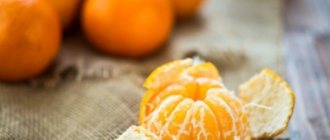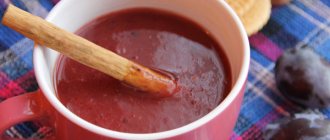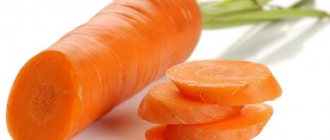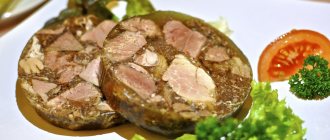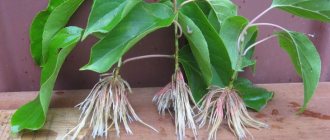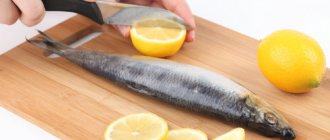Having a child is a difficult time in a woman’s life. It is necessary to take care of the baby and eat a healthy, balanced diet. The quality of milk depends on the health of the mother, which is why it is so important to follow a diet and not risk the safety of the newborn. This doesn't mean you have to give up your favorite foods. It is important that food is properly prepared, then it will have a good effect on health.
Rice is one of the most popular foods. It does not cause allergies and has a good effect on the gastric mucosa. Rice is very filling and nutritious. It can be used in a wide variety of dishes - from fluffy desserts to salads and soups. Pilaf occupies a special place in this list, being everyone’s favorite dish. But will pilaf harm a baby while breastfeeding? Many young mothers ask this question.
There is no need to go to extremes and artificially limit your menu to milk porridges, noodles and lean soups. These sacrifices are in vain. The right pilaf will turn out to be a real useful find for a young mother. You just need to change the recipe, making it less fatty, and reduce the amount of seasonings. Let's take a closer look at whether pilaf is suitable for a nursing mother.
And you need to start with the question of whether the main component of the dish, boiled rice, is possible when breastfeeding (BF). Many doctors advise caution when eating with this product. The arguments are as follows:
- Rice can lead to constipation and intestinal dysfunction in the mother. The same problems can occur in a newborn.
- Rice helps bind water. You must remember to drink plenty of liquid after pilaf so that there are no problems with lactation.
- Pilaf is usually prepared with the addition of lard and a lot of spices. There is a danger that some of them, if released into milk, will cause itching, intestinal colic and increased gas formation in the baby.
Important: after a caesarean section, it is better to exclude pilaf from the menu, as it can cause constipation.
But at the same time, rice is a very healthy product, rich in elements necessary for the body. It is recommended for overweight people. Rice gives you a feeling of fullness for a long time and does not allow fluid to linger in the body. Unpolished rice is the healthiest because it retains more vitamins and minerals.
The beneficial properties of rice can be listed for a long time. Here are just a few:
- Vitamin E quickly strengthens hair and triggers skin cell regeneration.
- Vitamin PP improves blood circulation and regulates brain functions.
- Phosphorus is responsible for bones and teeth, improves metabolism.
- Potassium helps the heart and kidneys work properly.
- Iron is one of the most essential microelements for humans. Its deficiency is often observed in pregnant women and can cause anemia.
- Iodine is responsible for the growth and development of the body, which is especially important during pregnancy.
- Zinc helps the immune system function properly, and its deficiency causes growth retardation.
- Amino acids perform many different functions in the body; their deficiency leads to decreased appetite, poor sleep and many other unpleasant consequences.
- Rice also helps the baby gain weight, ensures cell growth and formation, improves lactation, strengthens tooth enamel, is easily digestible and gives a feeling of fullness for a long time.
Pilaf is useful for both mother and baby. Some of the disadvantages of rice can be avoided if you do not break some rules.
Important: the taste and benefits of the finished dish depend on the quality of rice. The grains should be approximately the same size and shape. Their color can vary from white to yellowish. You can also check the quality of rice at home. The grains need to be poured with boiling water. Poor quality rice will turn into mush and separate. If the grains are only swollen, then the product meets the standards.
What dangers does pilaf pose?
- Rice affects the functioning of the intestines, and in women after childbirth, its work is not always adjusted properly. Eating rice can cause constipation, which is undesirable for all people, but for women with stitches after cesarean or labor ruptures it can be quite dangerous. Since rice contains approximately 50% starch, its consumption can cause constipation in a newborn baby, whose enzyme system is not yet fully developed and cannot properly digest complex carbohydrates supplied with food.
- Since real pilaf is prepared from meat and fat, with a large number of different spices, then, of course, some of these products will end up in mother's milk. The baby may react to such food with an allergic reaction, intestinal colic, and increased gas formation.
- Rice binds water contained in the body, which can affect lactation. Therefore, when eating rice, mothers need to drink plenty of extra fluids during breastfeeding.
At the same time, rice is very healthy, because it contains several B vitamins (B1, B2, B3, B6), as well as E and PP, and is rich in microelements such as phosphorus, potassium, iron, zinc, calcium, iodine and others. It also contains amino acids needed by the body.
Pilaf. So aromatic, juicy, spicy and satisfying - a wonderful dish that makes your mouth water when you remember it.
But is it possible to eat it during breastfeeding? The baby reacts sharply to any changes in the mother’s diet, so you need to very carefully introduce new foods and dishes into the diet, especially pilaf.
After all, it contains rice (a rather heavy product), meat and spices.
In the article we talk in detail about whether a nursing mother can eat pilaf, and give 3 recipes for the safest options for preparing this dish.
Calorie content and properties of rice
Rice is considered one of the basic products in the diet of an expectant mother. The likelihood of developing allergic reactions in a baby is minimal, due to the absence of gluten in this cereal. In rare cases, individual intolerance to the product is observed. However, cereals have a special property, due to which it must be introduced into the diet with caution. The fact is that rice has a strengthening effect on the functioning of the intestines, and if consumed excessively or frequently, it can lead to constipation in mother and baby. It is recommended to adjust the serving size and frequency of intake according to individual needs. If a woman does not observe a negative effect of rice on stool, then it can be included in the daily menu.
Rice belongs to the herbaceous plants of the Cereal family and is very demanding on growing conditions.
This product is rich in vegetable protein, which is easily absorbed by the body. The composition contains vitamins B, PP, E. The rich mineral composition is noteworthy - the cereal contains silicon, phosphorus, iron, manganese, copper, selenium, and zinc in high concentrations. The product contains “slow” carbohydrates, saturates the body for a long time, gives strength and energy.
The calorie content of cereal is about 330 kcal per 100 g, but during the cooking process it absorbs a lot of liquid, increases in volume by 2-3 times, and the energy value of the finished dish is significantly reduced. Thus, boiled rice as a side dish without adding fat contains only about 150 kcal per 100 g. By wisely eating dishes from this cereal, a nursing mother does not have to worry about gaining excess weight.
Table: nutritional value and chemical composition of cereals
| Nutrient | Quantity | Norm* | % of the norm in 100 g |
| Calorie content | 333 kcal | 1684 kcal | 19.8% |
| Squirrels | 7 g | 76 g | 9.2% |
| Fats | 1 g | 60 g | 1.7% |
| Carbohydrates | 74 g | 211 g | 35.1% |
| Alimentary fiber | 3 g | 20 g | 15% |
| Vitamins | |||
| Vitamin B1, thiamine | 0.08 mg | 1.5 mg | 5.3% |
| Vitamin B2, riboflavin | 0.04 mg | 1.8 mg | 2.2% |
| Vitamin B4, choline | 78 mg | 500 mg | 15.6% |
| Vitamin B5, pantothenic | 0.4 mg | 5 mg | 8% |
| Vitamin B6, pyridoxine | 0.2 mg | 2 mg | 10% |
| Vitamin B9, folates | 19 mcg | 400 mcg | 4.8% |
| Vitamin E, alpha tocopherol, TE | 0.4 mg | 15 mg | 2.7% |
| Vitamin H, biotin | 3.5 mcg | 50 mcg | 7% |
| Vitamin RR, NE | 3.3 mg | 20 mg | 16.5% |
| Macronutrients | |||
| Potassium, K | 100 mg | 2500 mg | 4% |
| Calcium, Ca | 8 mg | 1000 mg | 0.8% |
| Silicon, Si | 100 mg | 30 mg | 333.3% |
| Magnesium, Mg | 50 mg | 400 mg | 12.5% |
| Sodium, Na | 12 mg | 1300 mg | 0.9% |
| Sera, S | 46 mg | 1000 mg | 4.6% |
| Phosphorus, Ph | 150 mg | 800 mg | 18.8% |
| Chlorine, Cl | 25 mg | 2300 mg | 1.1% |
| Microelements | |||
| Iron, Fe | 1 mg | 18 mg | 5.6% |
| Yod, I | 1.4 mcg | 150 mcg | 0.9% |
| Cobalt, Co | 1 mcg | 10 mcg | 10% |
| Manganese, Mn | 1.25 mg | 2 mg | 62.5% |
| Copper, Cu | 250 mcg | 1000 mcg | 25% |
| Molybdenum, Mo | 3.4 mcg | 70 mcg | 4.9% |
| Selenium, Se | 15.1 mcg | 55 mcg | 27.5% |
| Fluorine, F | 50 mcg | 4000 mcg | 1.3% |
| Chromium, Cr | 1.7 mcg | 50 mcg | 3.4% |
| Zinc, Zn | 1.42 mg | 12 mg | 11.8% |
| Fatty acid | |||
| Omega-6 fatty acids | 0.19 g | from 4.7 to 16.8 g | 4% |
| Monounsaturated fatty acids | 0.32 g | from 18.8 to 48.8 g | 1.7% |
| Polyunsaturated fatty acids | 0.19 g | from 11.2 to 20.6 g | 1.7% |
Norm* - approximate indicators for a middle-aged nursing mother
Harm
- Rice strengthens, and in women after childbirth, the intestines work unstable for the first time, so rice, especially after a caesarean section, should not be consumed.
- Doctors do not recommend consuming rice until the baby is 2-4 months old - by this time the child will be able to digest complex carbohydrates normally.
- Real pilaf includes fatty meat, a lot of oil, hot and aromatic spices - all this can cause, as well as the appearance of, and.
- Rice binds water, which can have a negative impact on milk production. Therefore, when consuming it, you need to additionally drink more water.
Benefit
- Rice contains a large amount of vitamins, especially B vitamins, as well as PP, E and minerals: zinc, calcium, iodine, iron and other microelements important for the body of mother and child.
- It has a fixing effect, so it is recommended to use it for diarrhea.
- Fills you up quickly and for a long time, without causing a feeling of heaviness (provided that it is a dietary pilaf).
- After a long diet, pilaf is one of the most delicious opportunities to please a nursing mother.
Harm and benefits of breastfeeding
The basis of pilaf is rice, which does not cause allergies and is one of the first components introduced into complementary foods. It has a beneficial effect on the stomach, if a woman usually does not experience negative effects such as constipation. Rice is a healthy product that gives you a feeling of satiety for a long time and contains a lot of microelements necessary for the body:
- amino acids contribute to the production of enzymes, hormones and antibodies;
- zinc has antioxidant properties;
- iodine stimulates brain activity;
- potassium normalizes heart rate;
- phosphorus maintains the body's energy balance;
- nicotinic acid reduces blood cholesterol levels;
- B vitamins are the best prevention of depressive conditions;
- Vitamin E preserves female beauty.
A distinctive feature of the oriental dish is its high nutritional properties. A small portion is enough to satisfy a woman quickly and for a long time. The complex carbohydrates that make up pilaf maintain the body’s energy at the proper level. Excellent taste and aroma are an ideal opportunity to please a woman after a long diet.
There is no clear answer to the question whether a nursing mother can eat pilaf - everything is individual. Some mothers calmly include new foods and dishes in their diet, others decide to play it safe and wait. Pilaf also has harmful properties:
- During the postpartum period, a woman’s gastrointestinal tract takes the longest to recover. The intestines are unstable, and rice is famous for its binding qualities. Pushing during defecation after cesarean section is especially dangerous.
- Rice “binds” water. It is necessary to drink more fluids so that breast milk production does not decrease.
- Complex carbohydrates are practically not absorbed by the child’s body, so they can cause problems with the child’s intestines.
Experts answer negatively to the question whether real pilaf is possible while breastfeeding. It contains seasonings with a pronounced taste and aroma, a large amount of oil, and fatty meats. Almost all the ingredients in the traditional recipe cause constipation, colic, and allergic reactions in the baby, so it is advisable to choose safe products for cooking.
Rules of use
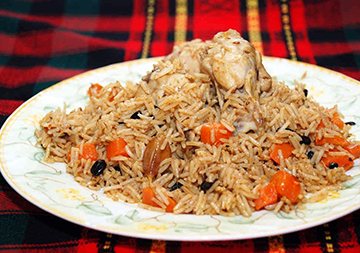
During breastfeeding, any foods and dishes should be introduced into the diet with caution.
For the first time, it is more like an experiment (or tasting) than a full meal: the mother should eat no more than 50 g of pilaf before 12:00-13:00 in the afternoon and always on a not empty stomach.
If neither the woman nor the baby experiences any negative feelings, next time the portion can be increased to 150 g.
The maximum portion of pilaf is 300 g per week. Even if the body's reaction is positive, an increase in the amount of rice can cause constipation and indigestion in a child.
Pilaf for a nursing mother should be prepared only from the lightest and lowest-calorie products. Instead of fatty lamb or pork, it is better to take chicken (preferably chicken fillet) or tender rabbit. Oils should be used as little as possible, since the baby’s body has difficulty digesting fats.
Another important nuance: the pilaf recipe will have to be greatly modified and such aromatic ingredients as pepper, barberry, tomato paste, etc., which add notes of spice and pungency to this dish, will have to be removed.
You also need to moderate the amount of salt. All these components can provoke an allergic reaction in the baby.
Recommendations for preparation
From the above, young mothers have a corresponding question: is it possible to eat chicken or pork pilaf during lactation, if rice has already been tested and does not provoke bloating in the child.
The answer is yes, you just need to follow the recommendations, which include the following basics:
- When breastfeeding, a woman should eat pilaf without spices - only a small amount of salt is allowed during cooking. All other seasonings are excluded.
- The recipe for breastfeeding should include only lean meat. It is allowed to cook with the addition of chicken, rabbit or beef. Pork pilaf is prohibited because the newborn’s body does not absorb fat.
- If a woman is breastfeeding, new dishes are included carefully - no more than 50 g per day and in the first half of the day.
- Even if you do not notice a deterioration in the child’s condition after breastfeeding, it is recommended to increase the portion gradually, bringing it to the daily norm of 150 g. When breastfeeding, it is forbidden to consume more than 300 g of rice per week.
- To avoid increasing the amount of fat and oil in the dish, it is recommended to cook in a slow cooker. Here you can do without adding oil, and the dish with meat will still turn out tasty and juicy.
Some recommendations for young mothers on feeding their baby when eating the dish are also given. So, you should feed your baby only before meals - this will minimize the risk of bloating in the newborn. The baby should be fed 2-3 hours after the woman has eaten, since breast milk includes all the harmful components of foods in the first 2 hours after they enter the stomach.
So, pilaf for a woman while breastfeeding can be consumed, and sometimes it is necessary if the young mother is a lover of the presented dish. But eliminating seasonings and fat is a must if you have to feed your baby regularly (the newborn is still small and eats only breast milk). As experts say, even foods that are harmful to feeding can be consumed in small quantities. The recipe can be changed in favor of an alternative that is less harmful to the baby. The main condition is to eat in small quantities in order to carefully monitor the condition of the child and your own. Psychologists say that after childbirth, parents should satisfy their needs, which often concerns nutrition. It is only important to follow the recommendations.
Recipe for a dietary version of pilaf
If you cook pilaf for a nursing mother, then only dietary pilaf. But “dietary” does not mean that the dish will not be tasty. Not at all! There are recipes that are almost as good as the original ones.
Pilaf without meat
This type of pilaf is cooked in the oven and does not contain meat - the lightest possible dish that is quickly digested and saturates the body with energy for a long time.
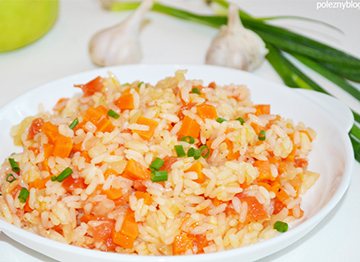
Compound:
- white or wild rice – 250 g, or 1 cup;
- sweet pepper – 2 pieces;
- tomatoes (can be cherry) – 2-3 pieces;
- onions - 1 large onion;
- vegetable oil – 2 tablespoons;
- salt (add to taste, but a little);
- greens to choose from - parsley, green onions, dill.
Before adding sweet peppers and tomatoes to a dish, you need to make sure that these vegetables do not cause.
Cooking process:
First you need to prepare the vegetables: chop the onion and lightly fry it in oil in a cauldron, then add chopped tomatoes and sweet peppers to it. Add rice to the vegetables and pour water over everything so that it completely covers the mixture + another 2-3 cm on top. Vegetables and rice are stewed in the oven for about half an hour at temperatures up to 180 degrees, until the liquid has completely evaporated. The finished pilaf can be slightly salted and decorated with chopped herbs.
Meat dietary pilaf
For this recipe you will need meat, but definitely dietary meat - chicken (drumsticks or chicken fillet).
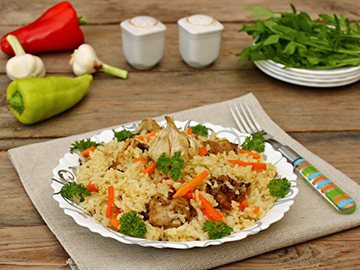
Compound:
- chicken meat - 1 chicken breast or 2-3 drumsticks;
- brown rice - 2 glasses of 200-250 g;
- carrots – 1 piece;
- olive oil – 3-4 tablespoons;
- salt to taste.
Cooking process:
Chicken meat should be cut into small pieces or strips and fried in a small amount of oil directly in a cauldron. Add grated carrots to the meat. Pour brown rice over the meat and carrots and add water until it rises 3-4 cm higher. Everything needs to be simmered until the liquid evaporates and the rice is completely softened. It should be noted that brown rice takes much longer to cook than regular white rice, so it is better to pre-boil it until half cooked.
It is better to salt the dish at the end - this way there is less chance that the dish will turn out too salty.
Sweet pilaf
Sweet pilaf contains fruits and some dried fruits. This is a dietary and very tasty version of the dish that you can treat yourself to for dessert.
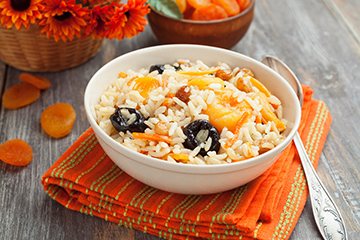
Compound:
- white rice – 1.5 cups;
- green apple (precisely green, because acid is important in this version of the dish) – 2 pieces;
- pumpkin – 300-400 g;
- raisins – 100 g;
- butter – 50-100 g.
Cooking process:
Before preparing the dish, you need to prepare the raisins: pour hot water over them so that they soften well, and then rinse thoroughly. Apples and pumpkin need to be cut into small pieces. Melt the butter in a cauldron, pour in some of the rice, raisins and apples, then again rice, raisins and fruit - it turns out that the components are laid out in layers. After this, everything is filled with water. Cook until the liquid evaporates (about 60 minutes).
Pilaf with dried fruits
Ingredients:
- 2 cups rice;
- 50 g dried apricots;
- 50 g prunes;
- 50 g raisins;
- 30 g walnuts;
- 4 tablespoons olive oil;
- a pinch of salt.
Wash dried apricots and prunes thoroughly, scald and finely chop. Mix dried fruits with crushed nuts and fry in a little oil. Add rice cooked until half cooked, add water to the mixture and cook for 5 minutes. Then cover the dish with a lid and leave to simmer for 10 minutes. Add salt.
You can also cook pilaf in a slow cooker. The first months of a baby’s life are especially troublesome, and this device will make a woman’s life much easier. The multicooker is perfect for preparing dietary dishes, will save a lot of time and will be an excellent helper for a sleep-deprived mother.
How to choose and cook rice correctly?

The basis of any pilaf is rice. You need to choose this product carefully, since there are many products in stores that are treated with harmful chemicals.
Such a product is dangerous not only for the mother and baby, but also for the average person.
To choose high-quality rice, you need to carefully examine the pack.
GOST should be indicated on it, and the grains themselves should look the same in size, even and white or slightly yellowish (depending on the type of rice).
You can check the quality of rice at home.
To do this, pour boiling water over the grains: if they spread, separate and turn into porridge, the product is of poor quality and has been treated with chemicals. They should only swell, but no more.
The healthiest type of rice is unpolished. It is not without a shell, is hard, and requires more time to prepare. And most importantly, this rice is healthier, since all vitamins and minerals are preserved in it.
Less healthy, but soft and not requiring a long wait, are polished and steamed types of rice. They are processed (complete removal of the shell, steaming), so they contain less nutrients, but the dish turns out to be more tasty and easily digestible.
The following types of rice are most suitable for preparing pilaf:
- Basmati is an Indian variety with a characteristic nutty aroma;
- red – does not boil over and does not turn into rice porridge, tasty and nutritious;
- Spanish - easy to recognize by its small grains. It quickly absorbs water and does not stick together;
- Uzbek rice is large, absorbs a lot of moisture, but does not stick together. The finished dish from it turns out crumbly, with a slightly sweet aftertaste.
Proper selection and preparation of rice
In order for milk to be nutritious and complete, a woman must eat properly. The quality of a natural product intended to nourish an infant depends on the diet.
On store shelves you can find rice treated with chemicals. This raw material lacks useful components. On the contrary, you can get a lot of problems. For example, poisoning or constipation in mother and baby.
When choosing a product, you should carefully inspect the packaging.
- The grains must be the same size, shape and shade.
- There should be no debris inside the package.
- The packaging must have GOST markings.
- An important point is the date (the grain must be fresh).
To determine the quality of rice (a couple of spoons) is poured with boiled water. Swollen grain indicates high quality of the variety. If the product has spread, separated, or turned into mush, it has been chemically treated.
Most often, for women during lactation, rice is used to cook porridge, puddings, meat or vegetable stew. The product is added to soup and salads. Side dishes are prepared from snow-white, crumbly, and hard (brown) varieties. Steamed grain is not suitable for risotto and casseroles (thickness is required). Desserts, meatballs, and meatballs are prepared from cut-grain, round rice.
When choosing a variety and dish, you should lean on the baby’s chair. If it is thin and frequent, it is recommended to eat liquid porridges with water, soups, and casseroles. can be eliminated with undercooked, long grain or parboiled rice with a vegetable or fruit smoothie.
During lactation, the woman chooses her own diet (individually). If you consume pilaf within reasonable limits, then there will be no harm to the child or mother.
- The first month after childbirth, mothers should protect their and their children's digestive tract from changes. Then you can introduce the rice dish in small portions.
- The most valuable components are found in unpolished grain varieties.
- The first tests are carried out with the product cooked in water without the addition of other ingredients. SS of the third month, you can diversify the porridge with fruits or vegetables (carefully). Before introducing new components, it is necessary to make sure that the child’s body reacts positively to additional products.
- You should not get carried away with dishes made from rice grains (2-3 times a week).
- If your baby develops colic after feeding, the amount of product consumed should be reduced. If reducing the portion does not bring the desired result, rice is excluded from the diet altogether. A second attempt at introducing the product is possible after a month and a half.
- It is better to avoid milk porridge for the first 4.5 months, as cow protein is a strong allergen for the child.
- From the age of five months, the baby is introduced to dairy products and cereals. Milk for porridge is diluted with water in half.
- For nursing women, herbs, spices, onions, and garlic are not added to the dish (so that the milk does not have a taste).
- It is better to eat pilaf at lunch.
Cooking technology

Before adding rice to vegetables and meat or fruits and dried fruits (if the pilaf is sweet), it must be rinsed well with running water.
To make it boil faster and be softer, you must first boil it until half cooked.
Then drain the water, rinse the grains with cold water and only then put them in the cauldron.
During cooking, do not stir the ingredients with a spoon. After all, this is what distinguishes real pilaf from rice porridge - it is not stirred, so the fat in which vegetables and meat were fried does not stick the grains together, and the dish turns out crumbly and traditional in appearance and taste.
You should also not stir because this will cause the rice to start to burn.
Without mixing, all components heat up evenly and do not burn. Due to this, the characteristic taste and aroma of the dish is preserved.
Pilaf recipes for nursing
Pilaf with meat
The main ingredient in pilaf is rice. A meat product for a nursing mother's meal is selected from dietary varieties. When breastfeeding, pilaf is cooked from chicken, rabbit, turkey, and veal. Pork is too heavy and fatty for nursing women.
The grain is washed under running water (1000 g), boiled in a saucepan with salted water (1000 ml). Chicken breast (800 g) is washed and cut into small pieces. Peeled and washed carrots (3 pieces) with onions (2 pieces), processed with a grater and knife.
Olive oil (400 ml) is poured into the cauldron, grated carrots and chopped onions are added, and stir-fried. Then the rice grain (prepared) is poured in, water and salt are added. Pilaf takes 45 minutes to prepare. The dish turns out airy and crumbly.
Diet pilaf
Chicken breast (1000 mg) cut into slices. Carrots (2 pieces) are peeled, washed, and grated. Rice (brown variety 2 cups) is boiled in a saucepan. Olive oil (half a glass) is poured into the cauldron, meat and vegetables are added. The ingredients are fried, boiled rice and water are added to them. There should be enough water so that the mass is covered 4 cm above the ingredients. The pilaf is cooked over low heat for 45 minutes.
Vegetarian pilaf
Onions (1 piece) are chopped with a knife and fried in oil (vegetable). Bell pepper fruits (2 pcs.), washed, peeled, cut into half rings or circles. Tomatoes (2 pcs.) are chopped into cubes. Grain, vegetables, water, and salt are added to the fried onion composition. Stewing the dish lasts half an hour. The dish can be prepared in a slow cooker. This pilaf is healthier for a nursing mother. The finished dish is served with herbs.
Sweet pilaf
For a sweet dessert you need raisins, pumpkin, apple. Raisins are washed, soaked in warm water, apples are cut into cubes. Melt butter (100 grams) in a prepared pan, add diced pumpkin (0.5 kg), then a third of rice, raisins (100 grams), apple slices (2 fruits). Amount of rice - 1.5 cups. It turns out to be a layered dish; water is poured on top, covering the top ball. The sweet dessert is cooked with the lid closed over low heat for an hour.
You can cook porridge with dried fruits. The ingredients are selected taking into account the characteristics of the child’s body. Each new product is first tested and then added to a woman’s diet.
The national dish of Uzbek cuisine has long taken root and is loved in our country. And all because it is nourishing, appetizing, and perfectly satisfies hunger. Most women cook and eat pilaf. But after the baby is born and during breastfeeding, they begin to doubt the presence of this dish on their menu. Some are concerned that rice has strong astringent properties, others are worried about its calorie content. So is it worth including pilaf in your diet during lactation?
Before you try pilaf
Before a nursing mother decides to try pilaf, she should start with regular rice porridge on water. You can start preparing such porridges with milk only from 3-4 months.
Rice porridge will help determine whether such a dish is suitable for the baby and mother or not. This is excellent preparation before tasting pilaf.
Another “test” dish is rice casserole. It is prepared with vegetables, eggs, low-fat sour cream and herbs. Salt and spices are not added. The dish is quickly digestible, it is light and easy to prepare.
Is pilaf suitable for a nursing mother and when is the best time to try it?
As mentioned above, a large number of pilaf recipes are known. Can a nursing mother of a newborn eat pilaf? If you prepare it according to a simple recipe, without any frills, then you can include this dish in the diet from the 2nd month of the baby’s life.
The first portion of pilaf should be no more than 70 g. Like all new products, it is necessary to try pilaf for the first time in the morning, assessing the child’s condition during the day and even the next day.
- A nursing mother can eat pilaf in the amount of 100–150 g per day. The weekly norm should not exceed 300–400 g.
- If rice is used in other dishes (soups, salads, casseroles, etc.), it is recommended to limit the intake of pilaf to 1 time per week.
You need to prepare pilaf using a minimum amount of ingredients, and try to make it not greasy. It is not recommended to use large quantities of herbs and spices. Before the first use, all the ingredients of this dish must be previously introduced into the diet of the nursing mother.
Can it be in a child’s diet?
Pilaf can be present in children's diets. But it must be properly cooked (baked or stewed). You cannot pour a lot of oil into baby food, much less fry meat and vegetables - during the frying process, trans fats are formed, which clog blood vessels and prevent normal blood flow.
Attention! Children's pilaf can be with various meats, apples, pumpkins, or with dried fruits: raisins, dried apricots, cherries, plums, kiwi or cranberries; only smoked prunes are prohibited.
At what age should it be included in complementary foods?
In the classic version, pilaf is acceptable in a child’s diet no earlier than 3 years.
, because this is quite a fatty dish. But it is allowed to include pilaf in the menu from one and a half years old, if you prepare it in a dietary way (in a slow cooker or oven: without vegetable oil and with light meat: rabbit or turkey).
No spices should be added except salt. For color, you can grate a carrot and chop half a shallot. Or even prepare sweet pilaf with dried apricots and raisins (your baby will undoubtedly like this dish). For the first pilaf in a child’s life, one or two teaspoons are enough.
After which you need to carefully monitor the condition and well-being of the baby. In case of unchanged behavior, absence of crying, moodiness, complaints of abdominal pain, you can increase the amount of pilaf to 50 grams per day. However, you should not eat it more than 2 times a week. The amount of rice for a three-year-old child is 100 grams per week.
Benefits for the baby
The main beneficial properties of pilaf for a child’s body are:
- high content of vitamins, minerals and trace elements (promote the harmonious development of brain activity and the nervous system);
- the presence of complex carbohydrates (adds energy);
- reduces the likelihood of headaches;
- increases the body's immune defense;
- promotes the development and strengthening of the musculoskeletal system.
Pilaf in a slow cooker for a nursing mother. Recipe.
Ingredients:
- 3 cups rice;
- 150 g onions;
- 100 g carrots;
- 120 g bell pepper;
- 120 g tomatoes;
- 3 cloves of garlic;
- greenery;
- salt;
- 80 ml vegetable oil.
Wash and peel the vegetables. Cut the onion, bell pepper and tomatoes into cubes. Grate the carrots on a coarse grater. Pour vegetable oil into the multicooker bowl and set the “Fry” mode. Add onion, bell pepper and carrots to the oil. Fry for 5 minutes. Add tomatoes and fry for another 5 minutes. Add salt and stir, fry for 5 minutes. Add rice and garlic. Fill the contents with water and close the lid. Cook for 40 minutes in the “Pilaf” mode. Sprinkle the finished pilaf with fresh herbs.
Why is it dangerous?
There are several reasons why you should refrain from eating pilaf:
Pilaf should be introduced from the age of two months. The first tasting dish should be dietary and combine a minimum number of ingredients. A nursing mother should give up almost all spices, as well as fatty meats.
Before introducing pilaf into the menu, it is necessary to introduce rice porridge in water so that the baby’s body’s reaction to the main ingredient – rice – is clear. If you are prone to constipation, it is better to avoid rice cereal altogether.
Important!
If your baby has an allergic reaction or digestive problems, you should give up pilaf for at least a couple of months!
Can a nursing mother eat this dish?
Reference! There are a huge number of pilaf recipes: from classic Uzbek with lamb to sweet with dried fruits.
Pilaf is not a prohibited dish on the menu of a nursing mother, but it must be prepared in a dietary version : the meat can be stewed, not fried.
It is worth preparing pilaf from lean and hypoallergenic varieties of meat: veal, turkey, rabbit, chicken. The only spices allowed are turmeric and a little barberry.
From what month?
Pilaf can be included in the diet of a young mother when the baby reaches 2 months. In the first month after childbirth, you should not rely on rice (it causes constipation, which is especially important after childbirth). And meat is introduced gradually, starting with easily digestible varieties. Before preparing pilaf, it is necessary that all its ingredients are already in the diet of the lactating mother separately.
Benefits for the mother
Pilaf is extremely healthy and includes the following properties for the nursing mother:
- high content of B vitamins, as well as E and PP - support immunity;
- the presence of many microelements (potassium, iron, zinc, calcium, iodine) – contribute to the normal functioning of the cardiovascular system, brain and central nervous system;
- maintains the beauty of hair, the strength of nails and the elasticity of the skin;
- helps improve mood.
In what form can it be eaten?
In what form can you eat rice? Dozens of dishes can be prepared from rice. But not all of them can be useful. If you are wondering whether breastfeeding women can have rice cooked with hot spices (for example, pilaf), then the answer will be negative. It is better to exclude spices from the diet altogether, especially spicy ones.
- You can't eat too much rice. Constipation may occur in both (mother and baby), colic and allergies.
- It is better to eat rice for the first time when the child is at least a month old, and if the baby does not have constipation.
- First, it is better to steam the rice and eat no more than two spoons after the main meal.
- If side effects are detected in your baby, it is better to postpone eating rice for a month. Then start again with small portions.
- When preparing porridge from this cereal, you should add fresh fruit or dried fruit to the dish. Be sure to choose fruits that do not cause allergies. They will prevent constipation, improve taste and add nutritional value.
- Introduce rice into your diet gradually. Be sure to ensure that the child does not have allergies, does not increase colic, and so on. If everything is fine, the portion can be increased in a week, or better yet in two. The maximum permissible portion is considered to be no more than 200 g per day, no more than three times a week.
- Until the baby is one month old, rice can only be used in making soups. Their concentration is not high, and it is more easily absorbed by the body.
- Don't forget to sort and soak the rice grains. To remove all nitrates.
- When preparing rice porridge, consider whether your child has lactose intolerance. If this is available, then cow's milk can be replaced with an analogue or cooked in water.
- When cooking, it is better to use brown rice. It is advisable not to use white. There is little benefit in it. But you can get constipation.
- Be sure to test purchased rice at home. To do this, soak a handful of grains in boiling water and wait a little time. If the rice swells, it can be eaten. But if it becomes slippery or even begins to turn into an incomprehensible paste-like paste, then such rice can be thrown away. There is no benefit in it, but the chemicals that were added to improve the appearance are sufficient.
Many people are still wondering whether rice can be consumed while breastfeeding. If good cereal is chosen and it is cooked correctly, then yes. Choosing the right, untreated rice is the most important task for a nursing mother.
How to cook cereal dishes
If the child is still very small or this is the first dish that the mother will eat while breastfeeding, then it is better to start with steamed or simply boiled rice in water. When cooking, it is important not to overdo it with the amount of liquid (preferably water). Otherwise you will have to drain the excess. And the broth will contain useful substances from the grains.
When you decide to add fruit to porridge or casseroles, it is better to start with apples or dried fruits (prunes, dried apricots). But it is better not to use banana, as it will enhance the fixing effect of the dish.
Sometimes, when checking with the doctor whether rice is ok while breastfeeding, the mother forgets to find out how to properly prepare the dish. More precisely, is it possible to cook porridge with milk, if you cook meat soup with rice, what kind of meat is better to choose, and so on. For the convenience of preparing boiled rice (different varieties), the table below is presented.
This table is convenient for preparing rice as a side dish or for preparing porridge. To remove excess starch from the grain, the rice is pre-soaked. It reduces the cooking time by 5 minutes. After cooking, the rice should sit and absorb all the liquid.
If a nursing mother is interested in whether it is possible to eat pilaf and rice porridge while breastfeeding, then the answer will be positive. But when preparing pilaf, you need to use lean meat (you can use white chicken meat). Eliminate hot spices completely (the fewer spices, the better). But even this dish can be eaten when the child is at least 4 months old.
At first, you should not add oil to the porridge; it is better to cook it in water. Later you can cook with a mixture of milk and water. If absorption is normal, then you can cook with milk. After this, you can start adding butter.
How is rice harmful for mother and baby?
Despite the fact that rice seems practically safe, it can also harm the baby’s health. What is the danger of the product:
- If consumed in excess (especially in its pure form), it can cause constipation. Therefore, if a baby has problems with bowel movements, rice is excluded from the diet.
- Sometimes it causes colic in a child.
- Causes bloating due to accumulation of gases.
- This is also the cause of flatulence.
- Sometimes an allergic reaction occurs.
- To give a more aesthetic appearance and increase the shelf life of the product, it can be subjected to harmful chemical treatment, thereby becoming harmful to the child and mother.
We looked at the negative properties. Based on this, we can say that rice is not recommended during breastfeeding in the first month of a child’s life. But from the following months it is welcome.
When eating dishes containing rice (especially porridge or pilaf, casseroles), do not overdo it with the number of servings. Otherwise, the beneficial properties of the product will be replaced by negative ones. If abused, it can increase blood pressure, cause allergies and abdominal pain.
And the best thing a nursing mother can do if she doubts whether rice is ok while breastfeeding is to consult a pediatrician. He will give advice on when you can start eating this porridge and in what quantities.
Lenten pilaf. Recipe.
- A glass of rice (you can use 1:1 white and wild).
- 3 bell peppers.
- 3 tomatoes.
- 2 small onions or 1 large one.
- 3 tablespoons sunflower oil.
- A little salt.
- Greens (onion, parsley).
Important: tomatoes and peppers are allergens. You should add them to the menu with caution, observing the baby’s reaction.
Chop the onion and fry briefly. Add tomatoes and bell peppers, simmer for 5 minutes over low heat. Carefully spoon the rice over the vegetables and cover the mixture with water. Simmer the pilaf in the oven for 30 minutes. Readiness can be determined by whether the liquid has evaporated or not. Salt the finished dish and add herbs.
Those with a sweet tooth will find their own version of this dish. A sweet version of pilaf made from dried fruits is popular in the east and pleasantly diversifies the menu of a nursing mother. Dried fruits contain a large amount of useful substances, not inferior to their fresh counterparts. For example, raisins are a source of vitamin B, which is useful for nervous disorders and insomnia. Prunes help cleanse the intestines and normalize digestion. Dried apricots contain a lot of potassium, which normalizes heart rate.
Brown rice dish
Can I eat brown rice while breastfeeding? Yes, but not all mothers know such a simple and unusual recipe for cooking rice. Wash brown rice and boil (10 minutes). The water is drained. In a frying pan, simmer sweet green peppers, carrots, onions, tomatoes, add rice and water to them (to hide the contents). Simmer until the water is absorbed over low heat. The dish turns out incredibly tender, satisfying and healthy. The taste and beneficial properties are simply excellent.
From everything written above, we can conclude that eating rice is very beneficial for both mother and baby. It is important not to overdo it with portions. Add fruits and vegetables to your dishes to reduce the fixing effect of rice. If you have lactose intolerance, do not use milk when preparing porridges. Do not consume the dish until the baby is one month old. Introduce into the diet gradually.
Rice strengthens teeth, bones and nerves. And it can help mom lose weight and get her skin and hair in order. It also normalizes the functioning of the digestive organs and cardiovascular system. Cleanses the body of toxins. Will prevent the development of anemia (both in the child and in the mother). Reduces swelling. And most importantly, it normalizes the production of breast milk.
There are probably no people who don’t like pilaf. This dish is prepared in every family, regardless of nationality. Among the variety of pilaf recipes, you can choose a dish to suit your taste. Is pilaf okay for a nursing mother? What pilaf is allowed for women to eat during lactation? What recipes are there for preparing dishes for mothers during breastfeeding? The most healthy dishes.
And it depends on the mother’s daily diet.
Useful properties of rice dish:
- valuable components of the product are completely absorbed;
- additional strength and energy of the body due to the complex carbohydrate composition of the product;
- with regular consumption of the dish, the risk of an outbreak of hypertension, as well as pressure surges, is reduced;
- pilaf strengthens the immune system.
Negative consequences after the dish:
- the possibility of constipation;
- discomfort in the gastrointestinal tract;
- fluid retention in the body;
- allergies (rare).

